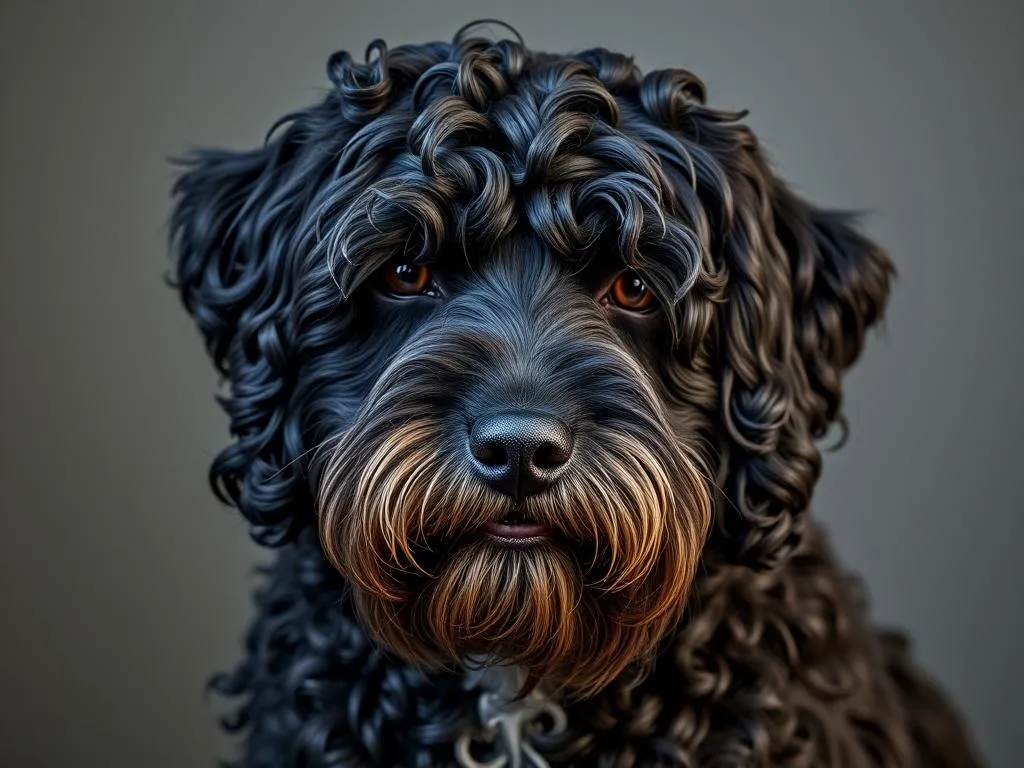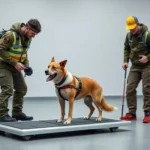
Introduction
The Portuguese Water Dog is a breed renowned for its intelligence, agility, and love for water. Originating from Portugal, these dogs were historically bred to assist fishermen by herding fish, retrieving lost gear, and delivering messages between boats. They possess a unique, curly coat that is both water-resistant and hypoallergenic, making them an excellent choice for families with allergies.
Characteristically, Portuguese Water Dogs are energetic, playful, and highly social. They thrive on interaction with their human companions and require regular exercise to keep them happy and healthy. Proper training is crucial for this breed, as it helps channel their energy positively and reinforces good behavior. Without it, these dogs may develop behavioral issues or become overly rambunctious.
This article aims to guide dog owners on the most effective methods for training their Portuguese Water Dog, ensuring that their furry friends grow up to be well-mannered and obedient.
Understanding the Portuguese Water Dog
Breed Characteristics
Portuguese Water Dogs are medium-sized dogs, typically weighing between 35 to 60 pounds. They have a distinctive coat that can be either curly or wavy, often seen in colors like black, white, or a combination of both. Their energetic nature means they require significant physical activity, ideally at least 30-60 minutes of exercise daily. This could include swimming, fetching, or participating in dog sports.
Temperament
Known for their high intelligence, Portuguese Water Dogs excel in training and are eager to please their owners. This breed is sociable, making them excellent companions for families and other pets. They thrive on positive interactions and are known to get along well with children, making them a popular choice for families.
Preparing for Training
Essential Training Tools
Before starting your training journey, it’s essential to gather the right tools. A sturdy collar or harness and a leash are crucial for managing your dog during training. Additionally, having a selection of treats and toys for positive reinforcement will motivate your Portuguese Water Dog to learn.
Setting Up a Training Environment
Choosing the right environment for training sessions is vital. Look for a quiet, distraction-free area where your dog can focus on you. This could be a room in your house or a fenced yard. Avoid busy parks or areas with many people and other dogs, as these distractions can hinder your training efforts.
Basic Training Commands
Teaching Basic Commands
Teaching your Portuguese Water Dog basic commands is fundamental for establishing good behavior and communication. The four essential commands to start with are:
- Sit
- Stay
- Come
- Down
Steps for Each Command
Sit
- Hold a treat close to your dog’s nose.
- Move your hand upwards, allowing their head to follow the treat, which will cause their bottom to lower.
- Once they are in a sitting position, say “Sit,” and give them the treat.
- Repeat this process until your dog consistently sits on command.
Common Mistakes to Avoid: Avoid pushing down on your dog’s back to force them into a sitting position, as this can create a negative association with the command.
Stay
- Start with your dog in a sitting position.
- Open your palm in front of you and say “Stay.”
- Take a few steps back. If they stay, reward them with a treat.
- Gradually increase the distance and duration before rewarding.
Common Mistakes to Avoid: Don’t reward your dog if they move. Wait until they remain in place before giving a treat.
Come
- Use a long leash to ensure control.
- Call your dog’s name followed by “Come” in a cheerful tone.
- Gently pull the leash towards you if they are hesitant.
- When they reach you, reward them with praise and treats.
Common Mistakes to Avoid: Never call your dog to punish them. This can create a negative association with the command.
Down
- Begin with your dog in a sitting position.
- Hold a treat close to their nose and move your hand to the floor.
- As they lower their body to follow the treat, say “Down,” and reward them.
- Repeat until they can do it without a treat.
Common Mistakes to Avoid: Don’t rush the process. Some dogs take longer to understand this command.
Socialization
Importance of Socialization
Socialization is a critical aspect of training for Portuguese Water Dogs. It helps them develop into well-adjusted adults by exposing them to various people, environments, and experiences. A well-socialized dog is less likely to exhibit fear or aggression in unfamiliar situations.
Socialization Techniques
To effectively socialize your Portuguese Water Dog, consider these techniques:
- Introducing New People: Invite friends over to meet your dog. Allow your dog to approach them at their own pace.
- Exploring New Environments: Take your dog on walks in different neighborhoods or parks to expose them to new sights and sounds.
- Playdates: Arrange playdates with other friendly dogs to help your dog learn proper social skills.
- Group Training Classes: Enroll in obedience classes where your dog can interact with other dogs and people in a controlled environment.
Advanced Training Techniques
Teaching Advanced Commands
Once your dog has mastered the basics, you can move on to advanced commands. Some key commands include:
- Heel
- Leave it
- Place
Tricks and Fun Activities
Incorporating fun tricks into your training can keep your Portuguese Water Dog engaged and mentally stimulated. Consider teaching your dog:
- Shake Hands: Hold out your hand and encourage your dog to place their paw in it.
- Roll Over: Teach your dog to roll over by guiding them with a treat.
- Fetch: While this may come naturally, refining the command can enhance your dog’s retrieval skills.
Engaging games like hide and seek or puzzle toys can also provide mental stimulation while reinforcing training commands.
Addressing Behavioral Issues
Common Behavioral Problems
Despite their intelligence, Portuguese Water Dogs may face behavioral challenges, such as:
- Barking: Excessive barking can be a sign of boredom or anxiety.
- Chewing: Dogs may chew on furniture or belongings due to anxiety or teething.
- Separation Anxiety: This breed is particularly prone to separation anxiety, often becoming distressed when left alone.
Solutions and Training Tips
Addressing these issues requires patience and persistence:
- Barking: Redirect barking by distracting your dog with a toy or engaging them in a game. Consider training them to understand when it’s appropriate to bark.
- Chewing: Provide appropriate chew toys and redirect your dog to them when they start chewing on furniture.
- Separation Anxiety: Gradually acclimate your dog to being alone by leaving them for short periods and gradually increasing the time.
If behavioral issues persist despite your efforts, seeking professional help from a dog trainer or behaviorist can provide additional strategies tailored to your dog’s needs.
Maintaining Training Consistency
Establishing a Routine
Consistency is key in dog training. Establishing a daily training routine helps reinforce commands and expectations. Short, frequent training sessions (5-10 minutes) are more effective than longer, infrequent sessions.
Monitoring Progress
Keep track of your dog’s progress, noting which commands they excel at and where they need improvement. Adjust your training techniques based on their responses, ensuring that you celebrate milestones and successes to keep them motivated.
Conclusion
Training a Portuguese Water Dog can be a rewarding experience filled with challenges and triumphs. By understanding their unique characteristics and needs, you can implement effective training strategies that promote good behavior and strengthen your bond with your dog. Remember to be patient and consistent throughout the training process. With time and dedication, your Portuguese Water Dog can become a well-trained and cherished member of your family.









